
How to Use Lithium Ion Battery - 3.7V 10050mAh (10 Ah): Examples, Pinouts, and Specs
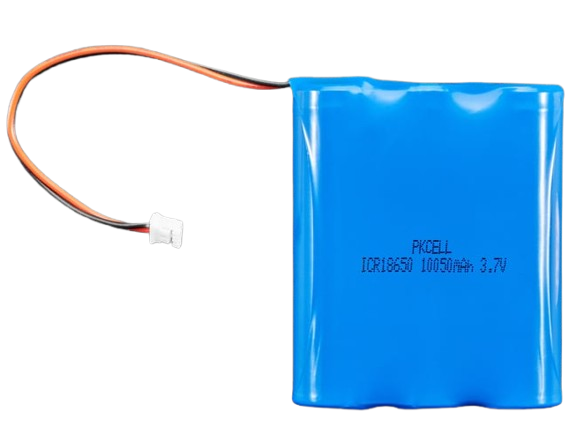
 Design with Lithium Ion Battery - 3.7V 10050mAh (10 Ah) in Cirkit Designer
Design with Lithium Ion Battery - 3.7V 10050mAh (10 Ah) in Cirkit DesignerIntroduction
The Adafruit Lithium Ion Battery (Part ID: 5035) is a high-capacity rechargeable battery designed for powering a wide range of electronic devices and projects. With a nominal voltage of 3.7V and a capacity of 10050mAh (10 Ah), this battery is ideal for applications requiring long-lasting, portable power. Its compact design and reliable performance make it a popular choice for hobbyists, engineers, and product developers.
Explore Projects Built with Lithium Ion Battery - 3.7V 10050mAh (10 Ah)
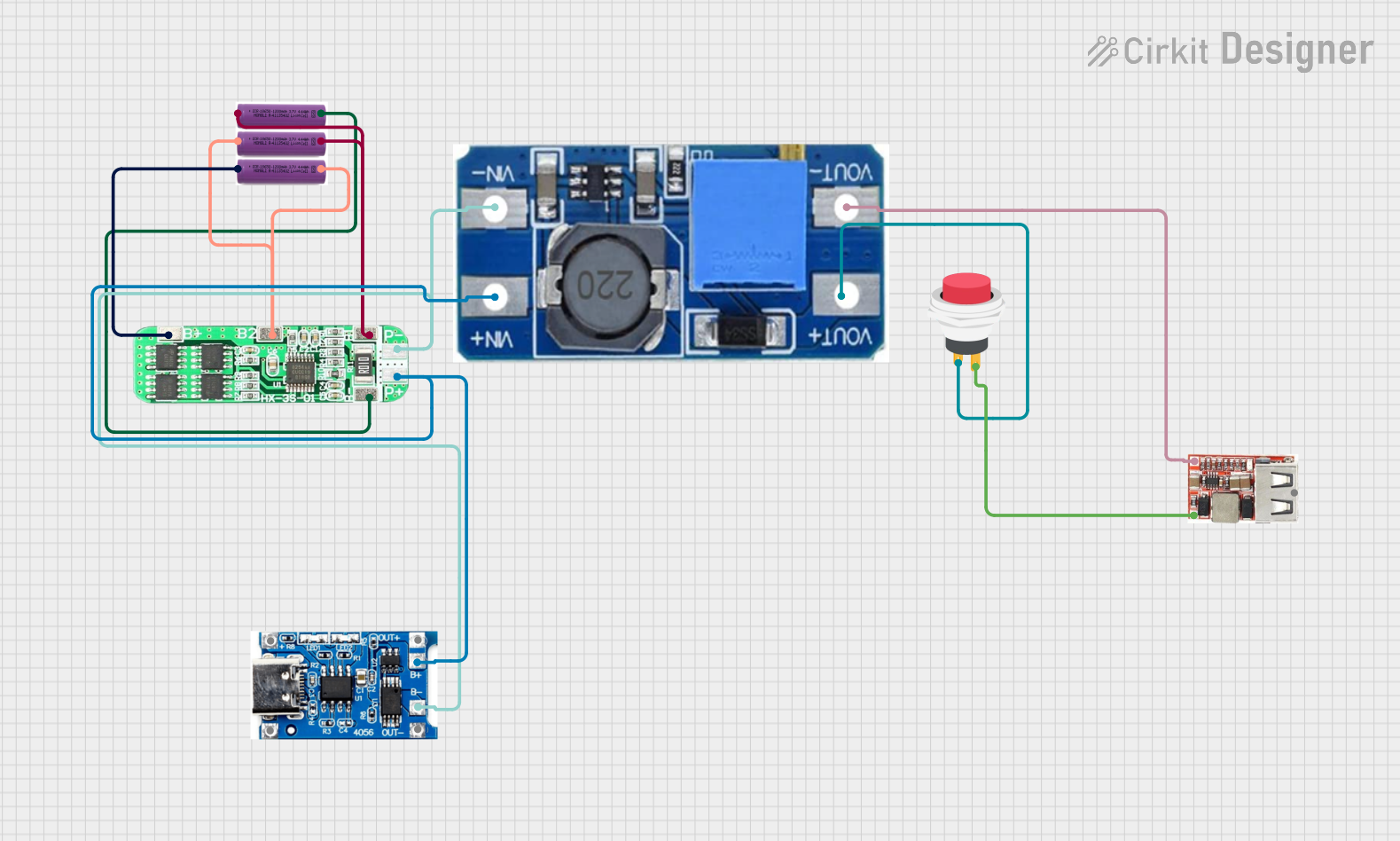
 Open Project in Cirkit Designer
Open Project in Cirkit Designer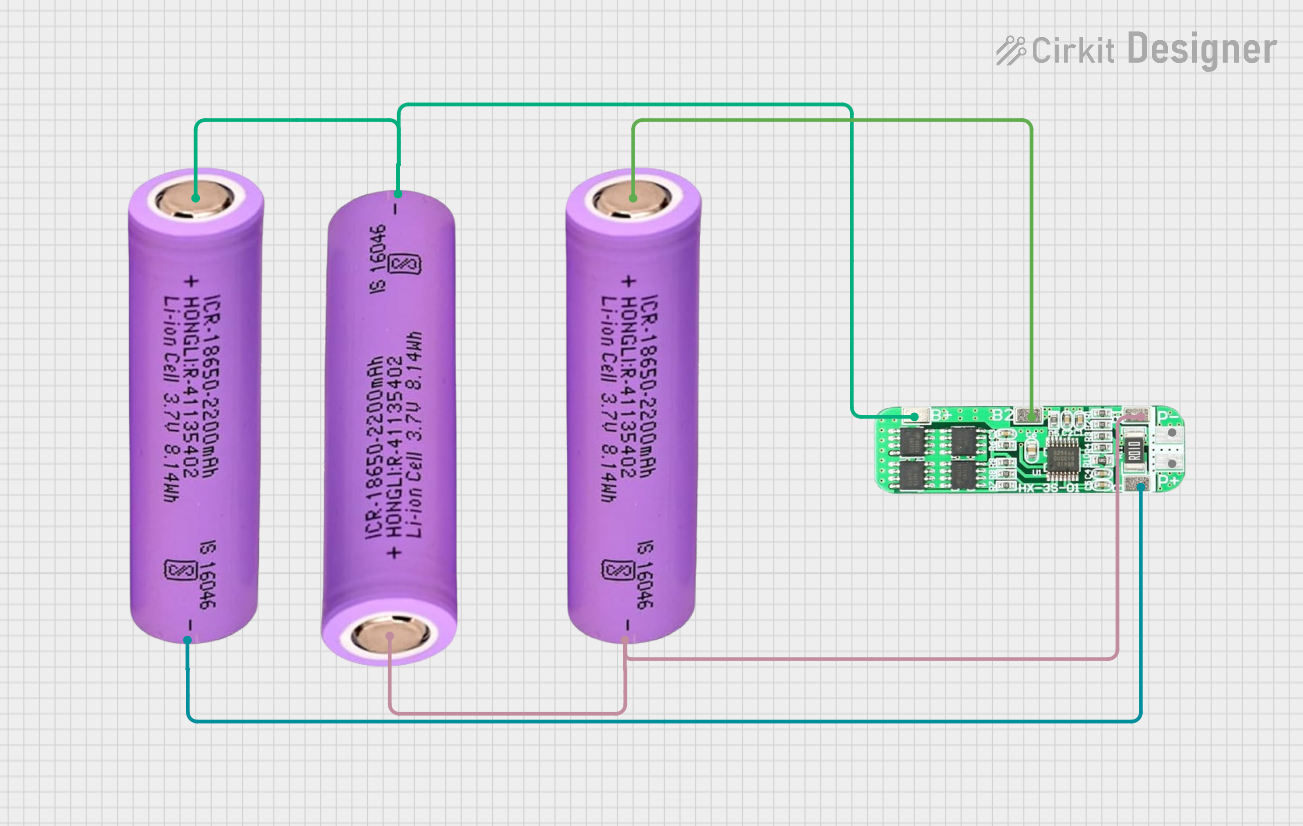
 Open Project in Cirkit Designer
Open Project in Cirkit Designer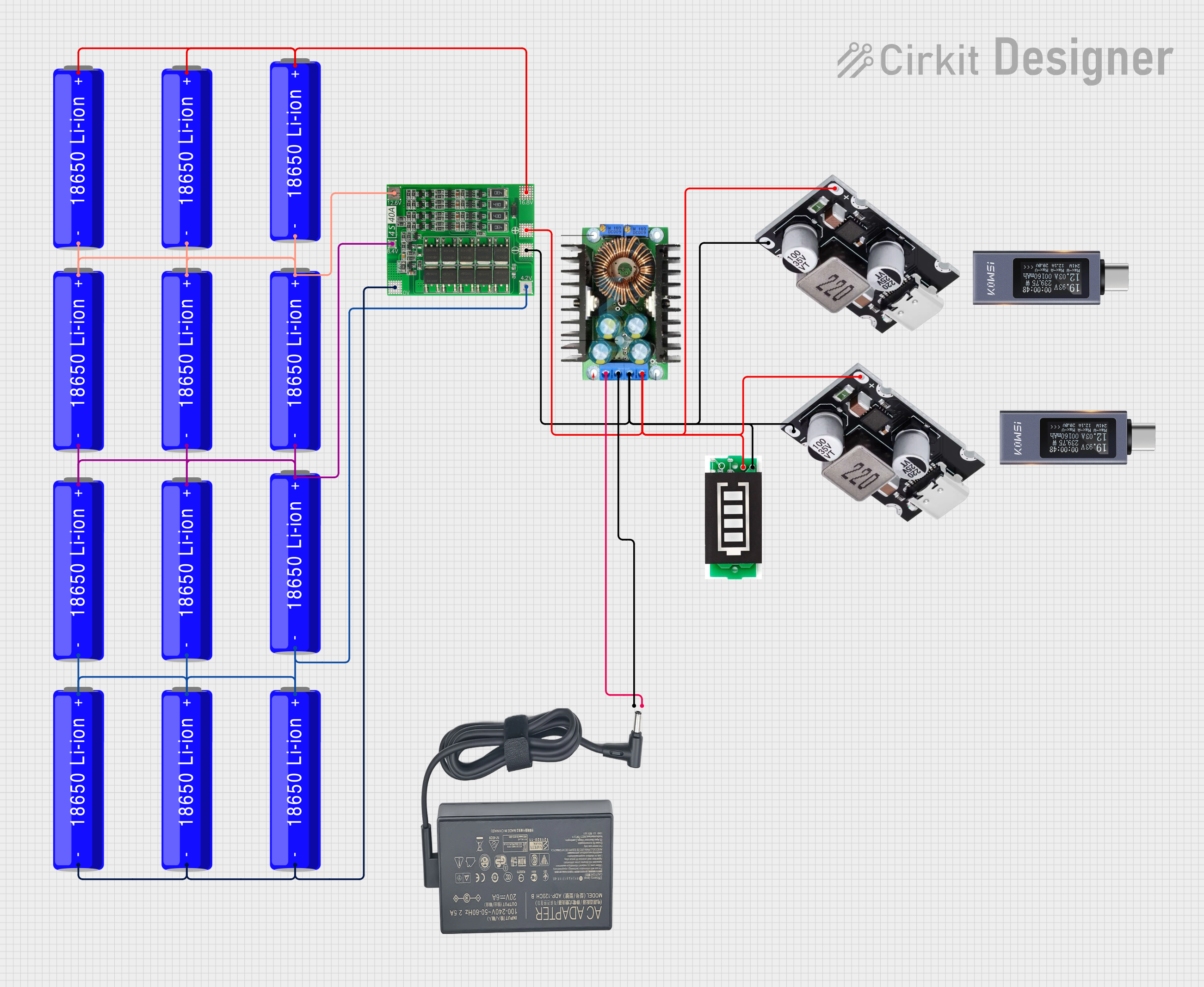
 Open Project in Cirkit Designer
Open Project in Cirkit Designer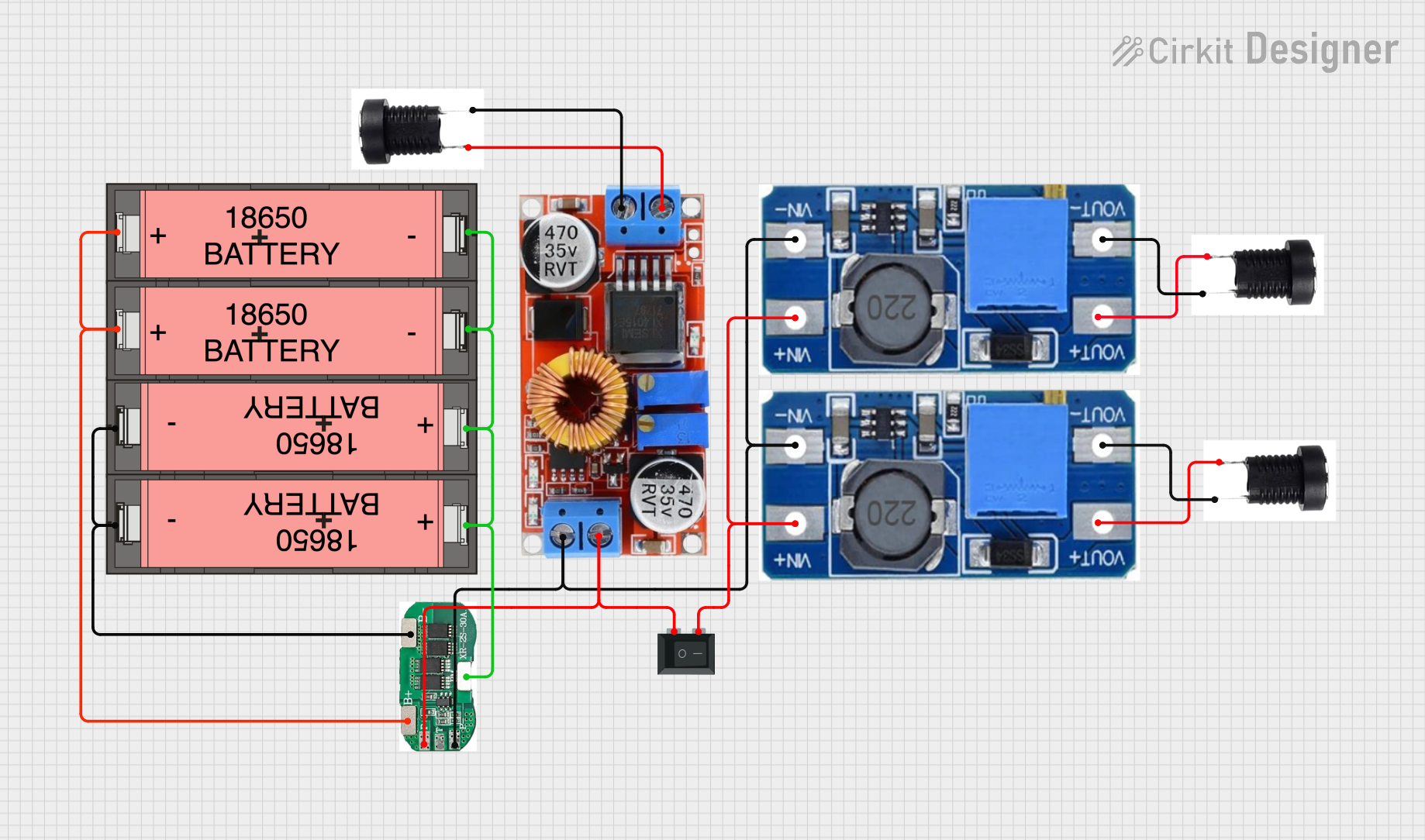
 Open Project in Cirkit Designer
Open Project in Cirkit DesignerExplore Projects Built with Lithium Ion Battery - 3.7V 10050mAh (10 Ah)

 Open Project in Cirkit Designer
Open Project in Cirkit Designer
 Open Project in Cirkit Designer
Open Project in Cirkit Designer
 Open Project in Cirkit Designer
Open Project in Cirkit Designer
 Open Project in Cirkit Designer
Open Project in Cirkit DesignerCommon Applications and Use Cases
- Portable electronics (e.g., handheld devices, wearables)
- Robotics and IoT projects
- Backup power supplies
- DIY electronics and prototyping
- Powering microcontrollers (e.g., Arduino, Raspberry Pi) with appropriate voltage regulation
Technical Specifications
The following table outlines the key technical details of the Adafruit Lithium Ion Battery:
| Parameter | Value |
|---|---|
| Manufacturer | Adafruit |
| Part ID | 5035 |
| Nominal Voltage | 3.7V |
| Capacity | 10050mAh (10 Ah) |
| Chemistry | Lithium-Ion |
| Maximum Charge Voltage | 4.2V |
| Discharge Cutoff | 3.0V |
| Maximum Discharge Rate | 2C (20A) |
| Recommended Charge Rate | 0.5C (5A) |
| Connector Type | JST-PH 2-pin |
| Dimensions | 90mm x 60mm x 10mm |
| Weight | ~200g |
Pin Configuration and Descriptions
The battery is equipped with a JST-PH 2-pin connector. The pinout is as follows:
| Pin | Name | Description |
|---|---|---|
| 1 | Positive (+) | Positive terminal of the battery (3.7V nominal) |
| 2 | Negative (-) | Negative terminal of the battery (ground) |
Usage Instructions
How to Use the Battery in a Circuit
Connecting the Battery:
- Use the JST-PH 2-pin connector to connect the battery to your circuit or charging module. Ensure the polarity matches the device's input terminals.
- If your device does not have a JST-PH connector, you can use an adapter or carefully solder wires to the connector.
Voltage Regulation:
- The battery outputs a nominal voltage of 3.7V, which can vary between 3.0V (discharged) and 4.2V (fully charged).
- Use a voltage regulator (e.g., a buck or boost converter) if your circuit requires a stable voltage different from the battery's range.
Charging the Battery:
- Use a dedicated lithium-ion battery charger with a constant current/constant voltage (CC/CV) charging profile.
- Ensure the charger is configured for a maximum charge voltage of 4.2V and a recommended charge current of 0.5C (5A).
Discharging the Battery:
- Avoid discharging the battery below 3.0V to prevent damage.
- Use a battery protection circuit or a low-voltage cutoff feature in your design to safeguard the battery.
Important Considerations and Best Practices
- Safety: Never short-circuit the battery terminals, puncture, or expose the battery to fire or water.
- Storage: Store the battery in a cool, dry place at ~50% charge for long-term storage.
- Handling: Handle the battery with care to avoid physical damage or stress on the connector.
- Compatibility: Verify that your device or circuit is compatible with the battery's voltage and current ratings.
Example: Using the Battery with an Arduino UNO
To power an Arduino UNO with this battery, you can use a DC-DC boost converter to step up the voltage to 5V. Below is an example circuit and Arduino code:
Circuit Setup
- Connect the battery's positive terminal to the input of the boost converter.
- Connect the boost converter's output to the Arduino's VIN pin (5V input).
- Connect the battery's negative terminal to the Arduino's GND pin.
Arduino Code Example
// Example code to blink an LED using Arduino UNO powered by the battery
// Ensure the boost converter is set to output 5V for the Arduino
const int ledPin = 13; // Built-in LED pin on Arduino UNO
void setup() {
pinMode(ledPin, OUTPUT); // Set the LED pin as an output
}
void loop() {
digitalWrite(ledPin, HIGH); // Turn the LED on
delay(1000); // Wait for 1 second
digitalWrite(ledPin, LOW); // Turn the LED off
delay(1000); // Wait for 1 second
}
Troubleshooting and FAQs
Common Issues and Solutions
Battery Not Charging:
- Ensure the charger is compatible with lithium-ion batteries and configured for 4.2V.
- Check the connections and polarity of the JST-PH connector.
Device Not Powering On:
- Verify the battery voltage using a multimeter. Recharge if the voltage is below 3.0V.
- Ensure the device's input voltage range matches the battery's output.
Battery Drains Quickly:
- Check for excessive current draw in your circuit.
- Ensure the battery is fully charged before use.
Overheating During Use:
- Avoid exceeding the maximum discharge rate (20A).
- Ensure proper ventilation and avoid short circuits.
FAQs
Q: Can I use this battery to directly power a 5V device?
A: No, the battery's voltage ranges from 3.0V to 4.2V. Use a DC-DC boost converter to step up the voltage to 5V.
Q: How long will the battery last on a single charge?
A: Battery life depends on the load current. For example, at a 1A load, the battery can last approximately 10 hours (10050mAh ÷ 1000mA).
Q: Is the battery protected against overcharging and over-discharging?
A: No, this battery does not include built-in protection. Use an external protection circuit or a charger with safety features.
Q: Can I connect multiple batteries in series or parallel?
A: Yes, but ensure proper balancing and protection circuits are used to prevent damage or unsafe conditions.